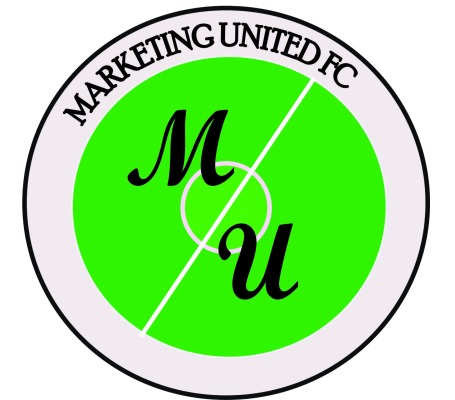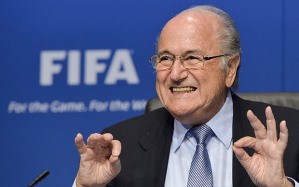 This past Wednesday night in Hempstead, NY on the campus of Hofstra University, almost 11,500 fans packed Shuart Stadium and witnessed the New York Cosmos of (the minor league) NASL upset New York City FC of (the major league) MLS after extra time in a penalty kick shootout. NYCFC found itself playing on a turf surface designed for college football and a visiting locker room without a tunnel to the pitch, leaving for an awkward walk through the concourse to ogling fans. Why was a major league soccer team playing in these less than stellar conditions, as have many teams before it?
This past Wednesday night in Hempstead, NY on the campus of Hofstra University, almost 11,500 fans packed Shuart Stadium and witnessed the New York Cosmos of (the minor league) NASL upset New York City FC of (the major league) MLS after extra time in a penalty kick shootout. NYCFC found itself playing on a turf surface designed for college football and a visiting locker room without a tunnel to the pitch, leaving for an awkward walk through the concourse to ogling fans. Why was a major league soccer team playing in these less than stellar conditions, as have many teams before it?
The U.S. Open Cup is the second oldest continuous tournament in the world, crowning its first champion in 1914. During that inaugural competition, the Brooklyn Field Club claimed the trophy after defeating Brooklyn Celtic in Pawtucket, Rhode Island. The tournament has taken place every year since, including the years during World War II, and it includes every single professional soccer team in the country, as well as some amateur clubs.
In America, we love a Cinderella story. But unfortunately, since Major League Soccer was created, only one minor league soccer team has claimed the trophy and that was the Rochester Raging Rhinos of the now USL (United Soccer League) back in 1999. Since then, an MLS club has won the trophy every season, including last year’s champion, the Seattle Sounders. Even more unfortunately, not every MLS team takes the tournament seriously with its final prize winnings of only $250,000 and an automatic place in the CONCACAF Champions League, North America’s weaker counterpart to Europe’s UEFA.
Similar tournaments to the Open Cup with a surprisingly less lengthy history are played each year in European powerhouses such as England, Italy, and France with formidable marketing, excellent TV ratings and sell-out crowds. In contrast, the U.S. Open Cup doesn’t even have an official website. The Cup.us, arguably the most extensive website covering the U.S. Open Cup, was created in 2003 by an internet radio show called “Soccer Fanatics Radio Show” hosted by Josh Hakala. Since then, the U.S. Soccer Federation has incorporated an Open Cup tab to its website, but with few features and typically just game highlights and a bracket of results. The quickest way for fans to here about the draw for who their teams would play in each round of matches was through a U.S. Open Cup Twitter account.
In today’s society where sports fans are accustomed to real-time scores, extensive TV coverage, and a marketing blitz, it is amazing to see how the U.S. Open Cup is almost a secret kept in hardcore fan circles. In order to pack the stadium at Hofstra University, the New York Cosmos marketing team had to work in-house to get the message across digital media and radio stations like WFAN in New York that the game was even taking place. The “derby” concept of two New York teams playing each other for the first time in history had to be more emphasized than the intrigue surrounding the century old tournament.
The U.S. Open Cup seems to be a missed opportunity for growing soccer’s success in America. In a country that views baseball as its pastime, and football as its TV ratings king, the fact that soccer owns the oldest sports competition still played in the U.S. just might blow people’s minds if advertised effectively. Until then, let’s hope for a Cinderella story that can bring the tournament out of the shadows and into the spotlight.
REFERENCES
http://www.nycosmos.com/news/2015/06/18/wild-finish-sees-cosmos-past-nycfc-on-penalties
http://www.ussoccer.com/lamar-hunt-us-open-cup/open-cup-champions



 you’ve been living under a rock this week, you know that Sepp Blatter has resigned as the President of FIFA amidst the arrests of various FIFA officials for allegedly accepting bribes and the corruption of the organization moving to the forefront of world news. This is despite winning re-election on Friday shortly after the negative news went public. No doubt, this is an image nightmare for even the most optimistic PR specialist. However, there are certain organizations breathing a sigh of relief thanks to this recent news.
you’ve been living under a rock this week, you know that Sepp Blatter has resigned as the President of FIFA amidst the arrests of various FIFA officials for allegedly accepting bribes and the corruption of the organization moving to the forefront of world news. This is despite winning re-election on Friday shortly after the negative news went public. No doubt, this is an image nightmare for even the most optimistic PR specialist. However, there are certain organizations breathing a sigh of relief thanks to this recent news.